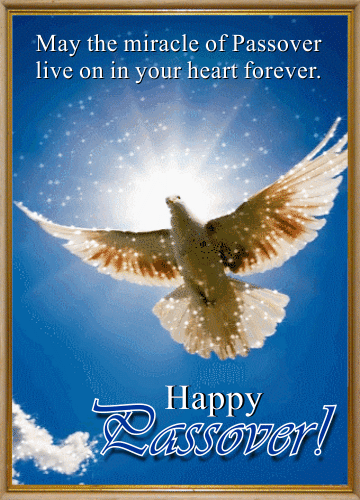🍞 Last Supper 🍽️ Passover Seder 🍷
Passover: ✡️
Good Friday: ✝️

The traditional explanation is that the meal was the customary Passover feast, and this can claim the support of the Gospel records, both Synoptic (e.g. Mk. 14:1-2, 12-16) and Johannine (e.g. 13:21-30).
There are features of the meal which students of Judaism (notably P. Billerbeck and G. H. Dalman) have noted as distinguishing features (of the Paschal feast, e.g. reclining at the table (*Abraham’s Bosom), the distribution of alms (cf. Jn. 13:29), and the use of the ‘sop’ which is dipped in the special h£ar set sauce as a memorial of the bitterness of the Egyp. bondage. See the full details in G. H. Dalman, Jesus-Jeshua, E.T. 1929, pp. 106ff., and J. Jeremias, The Eucharistic Words of Jesus, E.T. 21966, pp. 41ff.
But the evidence is not so compelling as to exclude all other interpretations, although there is a tendency today, especially since the first publication of Jeremias’ book in 1949, to give more respectful consideration to the Passover view than was formerly done.

Assuming that Friday was the actual day of Christ’s death, the problem is in trying to determine whether or not the Last Supper was a Passover meal. The Synoptic Gospels state that the meal which Jesus and His disciples ate on Thursday evening was the Passover (Mt 26:17–20; Mk 14:12–17; Lk 22:7–16). However, the picture in John is that the Passover meal of the Jews occurred on Friday evening, after the death and burial of Christ.
There are basically two arguments for this: (1) John 19:14 states that the day of Jesus’ trial and execution was “the day of preparation for the Passover” (NASB), implying that the Passover was the next day. The term “preparation” both in the Synoptics (Mt 27:62; Mk 15:42; Lk 23:54) and in John (19:31, 42) always has reference to the day before the sabbath, i.e., to Friday. So in the present passage the “preparation for the Passover” may simply be interpreted as “Friday of the passion week.” (2) John 18:28 states that the Jewish accusers of Jesus “did not enter the praetorium, so that they might not be defiled, but might eat the Passover” (RSV). In conclusion, then, the Synoptics present the picture that the Last Supper was the Passover meal, whereas John gives the idea that the Passover was not celebrated by the Jews until after Jesus’ death and burial.
An alternative in which Jesus and His disciples ate the Passover meal earlier than most of the Jews is worth consideration and may well be the answer to the problem. There are several approaches within this basic solution. Some feel that Jesus arranged for an early Passover meal because He foresaw that His death would occur at the time of the official Passover sacrifice. Others think that Jesus and His disciples followed Qumran calendar and ate their Passover on Tuesday evening (FLAP, p. 297) while mainstream Judaism had it on Friday. Regarding these two views, however, it is difficult to understand why the priests at the temple would have slain a lamb especially for Jesus’ disciples before the official time.
Finally, others think that the Galileans and/or the Pharisees ate the Passover on Thursday night (Nisan 14) and the Judeans and/or the Sadducees ate the Passover on Friday night. Hence, Jesus and His disciples were among those who ate the Passover on Thursday. Since a great number of people would be eating the Passover on Thursday evening, the priests would accommodate them (as in other years) with an earlier Passover sacrifice. Mark (14:12) literally says, “when they were sacrificing [Gr. ethuon, imperfect tense] the Passover,” that Jesus’ disciples asked Him where to prepare to eat the Passover.
Finally, others think that the Galileans and/or the Pharisees ate the Passover on Thursday night (Nisan 14) and the Judeans and/or the Sadducees ate the Passover on Friday night. Hence, Jesus and His disciples were among those who ate the Passover on Thursday. Since a great number of people would be eating the Passover on Thursday evening, the priests would accommodate them (as in other years) with an earlier Passover sacrifice. Mark (14:12) literally says, “when they were sacrificing [Gr. ethuon, imperfect tense] the Passover,” that Jesus’ disciples asked Him where to prepare to eat the Passover.
Passover parallels
Since the late 20th century, with growing consciousness of the Jewish
character of the early church and the improvement of Jewish-Christian
relations, it became common among some lay people to associate the Last
Supper with the Jewish Seder.
This is due to the fact that the Synoptic Gospels describe it as a
Passover Meal. Some evangelical groups borrowed Seder customs, like Haggadahs,
and incorporated them in new rituals meant to mimic the Last Supper;
likewise, many secularized Jews presume that the event was a Seder. This
identification is somewhat erroneous, as although it was most likely a
Passover Meal, it was according to the Second Temple Period customs and
included the consumption of a full lamb. The earliest elements in the
current Passover Seder (a fortiori the full-fledged ritual, which is
first recorded in full only in the ninth century) are a rabbinic enactment instituted in remembrance of the Temple, which was still standing during the Last Supper.
A work belonging to early Gnosticism known as the Gospel of Judas
features a story of Jesus meeting with his disciples as they bless
bread with a prayer of thanks, recalling accounts of the Last Supper, Eucharist or some other holy meal.

Passover
The Jewish Holiday 🕍 For Gentiles
👇 🙏 👇
https://paulcpw.blogspot.com/2020/04/passover-jewish-holiday-for-gentiles.html
The Jewish Holiday 🕍 For Gentiles
👇 🙏 👇
https://paulcpw.blogspot.com/2020/04/passover-jewish-holiday-for-gentiles.html










No comments:
Post a Comment